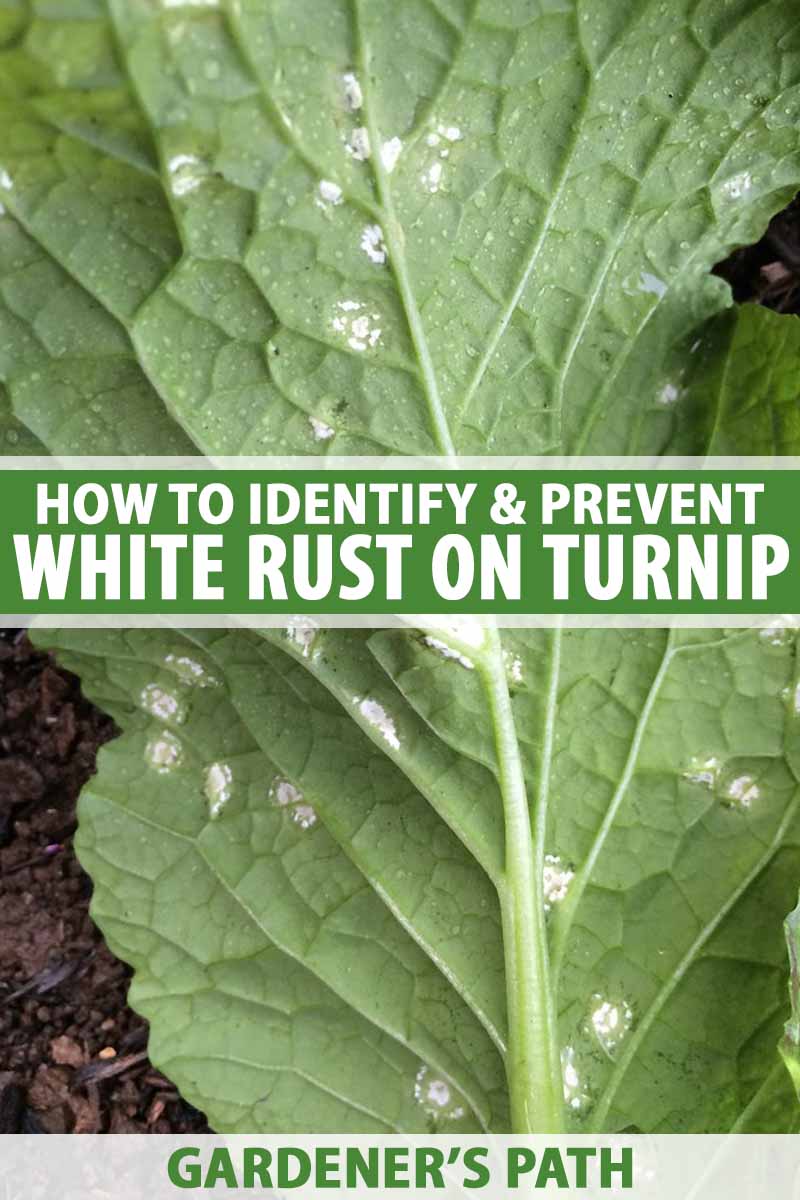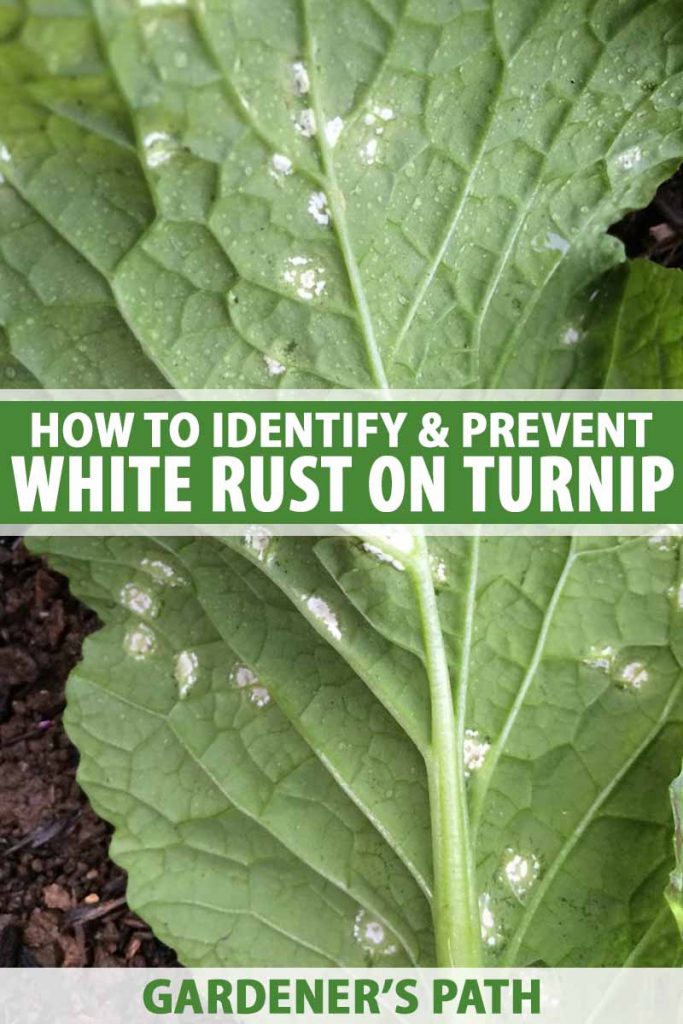Albugo candida
White rust, attributable to Albugo candidaafflicts turnip leaves and flowers and was as quickly as thought-about a fungal illness.
The organism has been reclassified and isn’t a fungus. It’s a water mildew – a relative of brown algae.
Nonetheless, it seems and acts like a fungus! And it nonetheless infects turnips!
You could know in case your turnip plant is contaminated if the bottoms of the leaves have white pustules that appear like blisters, and the higher sides have faint yellow spots reverse the white ones.


We hyperlink to distributors which will show you how to uncover related merchandise. Do you need to purchase from one amongst our hyperlinks, we’d earn a cost.
Rusts don’t kill their hosts, however they don’t do them any favors every. One of these rust is discovered all by the world wherever turnips are grown.
So far as plant diseases go, white rust on turnips merely will not be usually a excessive illness. The leaves of contaminated crops look hideous, however the roots are usually nice.
Sadly, there aren’t any fungicides registered contained in the US to deal with white rust on turnips. You could must depend on preventative methods.
We’ll stroll you through the symptoms and life cycle of this illness and cultural strategies to deal with it.
Indicators of White Rust on Turnips
White rust has each native and systemic indicators.
The native ones current as white pustules on the underside of the leaves that appear like chalky white mud and faint yellow lesions on extreme. Along with, smaller stems and floral elements is also contaminated.
This doesn’t regularly occur, however If the an an an infection goes systemic (all by all of the plant), you will uncover flowers that develop abnormally, are distorted, and sterile.
These disturbed flowers are sometimes referred to as stagheads. These buildings are usually widespread on contaminated crops in intervals of prolonged rainfall and little daylight.
How the An an an infection Spreads
Spores unfold from the pustules, together with these produced on cruciferous weeds. Wind, bugs, or rain disperse them to fully totally different crops throughout the an equivalent fields and even in a number of fields.
The an an an infection is additional weak to unfold in moist native climate that’s 60 to 77 F.
Vegetation may also develop to be contaminated from thick-walled spores referred to as oospores which will likely be widespread contained in the stagheads and overwinter in plant particles contained in the soil.
One totally different draw once more of this rust is that it’d predispose your crops to develop downy mildew(hyperlink to turnip downy mildew article), one totally different illness attributable to a water mildew.
Cultural Controls
The shortage of fungicides registered to deal with white rust on turnips limits your choices to cultural controls. One in every of many key ones is to purchase prime quality seed that’s produced in a dry native local weather!
Because of the organism can overwinter in plant particles contained in the soil, attempt to plant your seed in a well-drained mattress that doesn’t have any plant residues in it.
You will must remove any cruciferous weeds like mustard or shepherd’s purse close to your crops, since they may harbor the illness. Must you’ll, rotate your turnips with a non-cruciferous crop for at the least two years to purge the soil of infective spores.
Attempt to reduce overhead sprinkling. That won’t forestall the rust from inflicting illness, however it’d reduce its severity.
After you might have harvested your turnips, incorporate any remaining crop residue into the soil as shortly as potential, so it is going to decompose and scale back the possibilities of the spores surviving.
Mitigation is Key
Whereas turnip rust produces hideous lesions on turnip leaves all by the world and often ends in distorted flower heads, this organism doesn’t kill its host.
No fungicides are registered to deal with turnip rust contained in the US, so chances are you’ll must depend on cultural controls like planting high quality seed, ruthlessly culling cruciferous weeds, and disking vegetation below after the season is over.


With these methods, you will need to be succesful to reduce your possibilities of getting an contaminated crop and produce turnips that may very well be supplied with their leaves.
And in case you nonetheless need assist figuring out a turnip illness contaminated your patchthen a few of these guides could also be of help:

